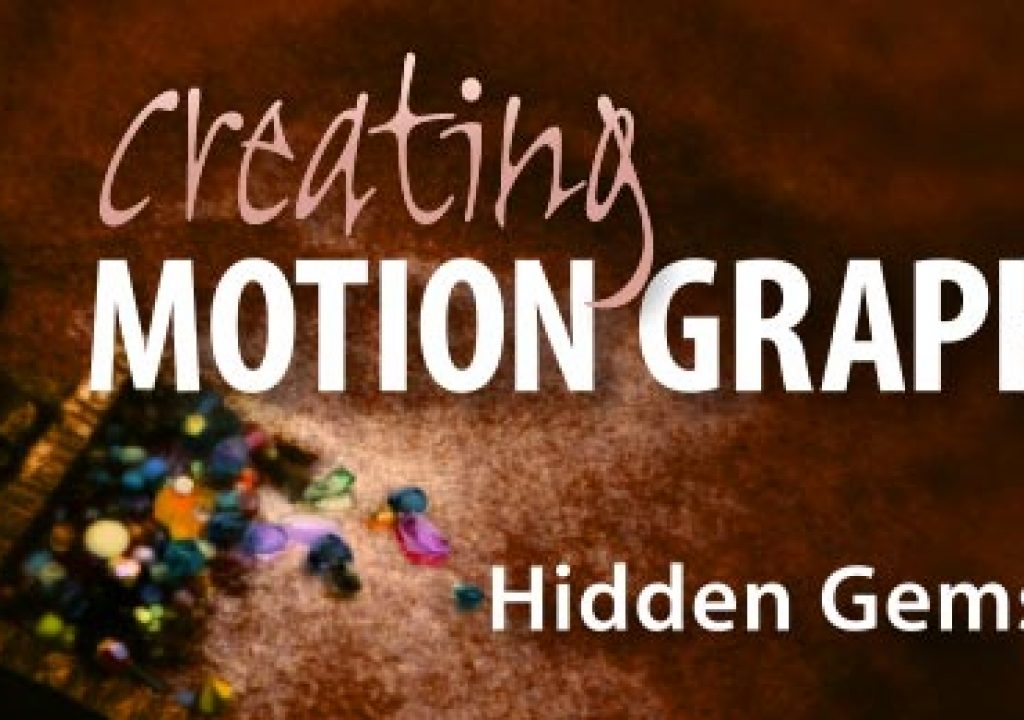
As you are aware by now, we’re going through our book Creating Motion Graphics with After Effects 5th Edition (“CMG5” for short) and pulling out a few “hidden gems” from each chapter. These will include both essential tips for new users, as well as timesaving gems that experienced users may not be aware existed.
Parallel Worlds was a new chapter created especially for CMG5, covering a number of special cases and “gotchas” that crop up when you try to combine 3D layers in After Effects, Live Photoshop 3D Layers, plug-ins that render 3D images onto 2D layers, and renders from 3D programs. It also includes new tutorials on Adobe Repouss© (part of Photoshop CS5 Extended) and Digieffects FreeForm (included in After Effects CS5). Many of the problems and workarounds are rather involved, so this is a case where having the book and its accompanying project files will be very helpful, but we’ll summarize the steps to accomplish a few choice tricks below.
This is the last chapter in Part 4 – Cameras! Lights! Action!. After this we get into Building Hierarchies: Parenting, Nesting, Precomposing, and Collapsing.
Rendering Bins and Breaks
At the core of understanding how various types of “3D” layers interact in After Effects is to remember that at its heart, it’s a 2D compositing program. Enabling a layer’s 3D Layer switch has two consequences: It allows the layer to be moved in three dimensions, but it also routes that layer off to a separate internal rendering engine. The output of that separate rendering engine is a 2D layer, which is then composited with the other 2D layers inside a composition. This is how 2D and 3D layers can coexist inside the same comp: 3D layers must eventually be rendered to 2D layers.
When multiple 3D layers are adjacent to each other in the Timeline panel’s layer stack, they may interact by way of intersecting each other, casting shadows onto each other, and receiving shadows from each other. However, if a 2D layer appears between a selection of 3D layers, the 2D layer acts as a “rendering break” that separates adjacent 3D layers into their own groups or “bins”:
Placing a 2D layer between 3D layers (look for the 3D cube icon – this column is for the 3D Layer switch) in the Timeline panel acts as a “rendering break” which disrupts how shadows fall between them. Note the lack of shadows on the front bikewheel. Also notice that the full-frame background video does not receive shadows from any of the 3D layers, even though it appears to “receive” shadows from the Drop Shadow layer styles applied to the 2D Bug and 2D Title layers.
(By the way, one of the tradeoff involved with Layer Styles – which typically look better than their 2D plug-in effect alternatives – is that they break up 3D groups when applied to 3D layers, whereas the 2D effects don’t. We cover other 3D rendering order issues, opportunities, and gotchas in Part 4 of CMG5.)
Casting 3D Shadows Onto 2D Layers
Normally, 3D shadows only happen between objects inside a 3D rendering group; 2D layers are excluded. However, there are several tricks to catch a 3D shadow and blend it onto a 2D layer. Our current favorite approach requires knowledge of a 3D layer’s Material Options as well as a bit about Blending Modes:
- Create a white solid or shape layer that is large enough to catch the desired shadow. If it’s too small, you can scale it up later as needed; a layer’s Scale value does not affect the sharpness of the shadows it receives (we discussed the parameters that do affect shadow sharpness in Chapter 15’s Hidden Gems).
- Enable its 3D Layer switch, and position it at the point in 3D space where the 2D layer theoretically exists. If the “2D” layer is a render from a dedicated 3D program, use the position and rotation of the surface that should be catching the shadow from the 3D program (we discuss this subject at length in CMG5 Chapter 40: Integrating with 3D Applications).
- Under this “shadow catcher” layer’s Material Options, make sure Accepts Shadows is On, but set Accepts Lights to Off – this will remove any side effects from a light’s cone, color, intensity, angle to the layer, et cetra.
- Then set its Blending Mode to Multiply. This means only the captured shadow will darken any layers underneath.
A white solid in 3D space will catch shadows from other 3D layers (left). Position and scale it up as needed, turn off its Accepts Lights option, and set its Blending Mode to Multiply to make this layer disappear and instead “cast” its captured shadow on 2D layers behind (right). Grid pattern courtesy Artbeats/Digital Biz
3D Effects and 2D Layers
Many effects – from such classics as Shatter and CC Cylinder, to the newly bundled Digieffects FreeForm, to popular third-party effects such as Zaxwerks Invigorator, Trapcode Particular, and Boris BCC Extruded Text – create 3D imagery with depth and perspective. Most “3D” effects also have options to react to 3D camera and lights in After Effects. However, in reality these effects are miniature 3D programs residing inside After Effects: Rather than using the After Effects rendering engine, they have their own internal rendering engines that create their own imagery. The result is a 2D layer (the 3D Layer switch is supposed to be left off) that does not interact with 3D layers in After Effects, including no native ability to receive shadows from or cast shadows onto those layers.
That said, CMG5 presents a couple of examples that work around this shortcoming. The general concept involves a few steps:
- Enabling the 3D Layer switch for the 2D layer that has the “3D” effect.
- Causing this layer to orient toward the camera, to remove unwanted perspective distortion from viewing the rendered image at an angle.
- Enabling this layer to Cast Shadows. (Also do the same to any 3D layers that are supposed to cast shadows onto this layer.)
- Doing whatever other fudging is necessary to make the resulting composite work, as you may still have issues with tracking the camera. But at least you’ll have shadows!
The 3D effect CC Cylinder renders perspective and follows a 3D camera correctly, but it does not cast or receive 3D shadows, and it breaks the rendering order between 3D layers (left). After enabling the 3D Layer switch for Cylinder and entering an expression for its Orientation, 3D shadows appear, and proper 3D perspective is somewhat maintained (right). Cylinder wrap texture courtesy Getty Images/Discovery
Making Photoshop 3D Layers More Interactive
Creating 3D objects in Photoshop and importing the resulting PSD file into After Effects has a lot of shortcomings and compromises compared to using After Effects plug-ins like Zaxwerks Invigorator, or a real 3D program like Cinema 4D. But if you work at a place that has the Adobe Creative Suite but no other software, it at least gives you an option to create objects with actual depth. In CMG5, we cover how to create these objects (as well as use Photoshop’s Vanishing Point module); buried in there is a key gem on reducing your frustration level with Live Photoshop 3D objects:
- After creating your object in Photoshop but before you save the file, open Window > 3D, look at the Render Settings pane (shown here), and set the Anti-Alias popup to Ray Traced Draft. The default of Interactive has rough, aliased edges and nowhere near as nice as lighting, while Ray Traced Final will take forever to render.
- When you import this PSD file into After Effects (make sure Live Photoshop 3D is enabled in the Import settings dialog), the object will initially render in Interactive mode, not Ray Traced Draft. This is because the Quality switch for the layer with the Live Photoshop 3D effect applied defaults to Draft. That’s okay to start out, as Interactive is much faster to work with when you are setting up your scene and animation.
- When it comes time to render or otherwise perform a “confidence check” on image quality, either manually set the Quality switch to Best, or double-check your Render Settings in the Render Queue (shown below) to verify that Quality is set to Best.
One of the options of the powerful Digieffects FreeForm effect (created by Chris Bobotis of mettle.com) is to use another layer as a displacement map. This creates all sorts of interesting extrusion, landscape elevation mapping, and related effects.
However, when you first select a displacement layer under Displacement Controls > Displace Layer, you may be very disappointed in the results: It will render as indistinct blob with the default settings. This is because the default setting for 3D Mesh Quality > Mesh Subdivision is waaaaaay too low for displacement work. We find we often need to increase it to at least 300 for standard definition resolution work; going much higher is not uncommon – with a resulting tradeoff in rendering speed. If you’re noticing a problem with aliasing edges after increasing Mesh Subdivision, try slightly blurring your displacement layer in a precomp (the subject of Chapter 19 in CMG5) to smooth the transitions at sharp edges.
FreeForm’s default Mesh Subdivision setting is too low to yield any real definition when using a displacement map (left). Increasing it at least 300 yields considerably better results (right).
Footage courtesy Artbeats/Ocean Water Effects
Trish and Chris Meyer share seventeen-plus years of real-world film and video production experience inside their now-classic book Creating Motion Graphics with After Effects (CMG). The 5th edition has been thoroughly revised to reflect the new features introduced in both After Effects CS4 and CS5. New chapters cover the new Roto Brush feature, as well as mocha and mocha shape. The 3D section has been expanded to include working with 3D effects such as Digieffects FreeForm plus workflows including Adobe Repouss©, Vanishing Point Exchange, and 3D model import using Adobe Photoshop Extended. The print version is also accompanied by a DVD that contains project files (CS5-only) and source materials for all the techniques demonstrated in the book, as well as over 160 pages of bonus chapters on subjects such as expressions, scripting, and effects.
We will be pulling a few “hidden gems” out of each chapter to share on ProVideoCoalition.com roughly every week. These will give you a taste for the multitude of time-saving tips, not-obvious features, little gotchas, and other insider knowledge you will find in CMG.
The content contained in Creating Motion Graphics with After Effects – as well as the CMG Blogs and CMG Keyframes posts on ProVideoCoalition – are copyright Crish Design, except where otherwise attributed.

